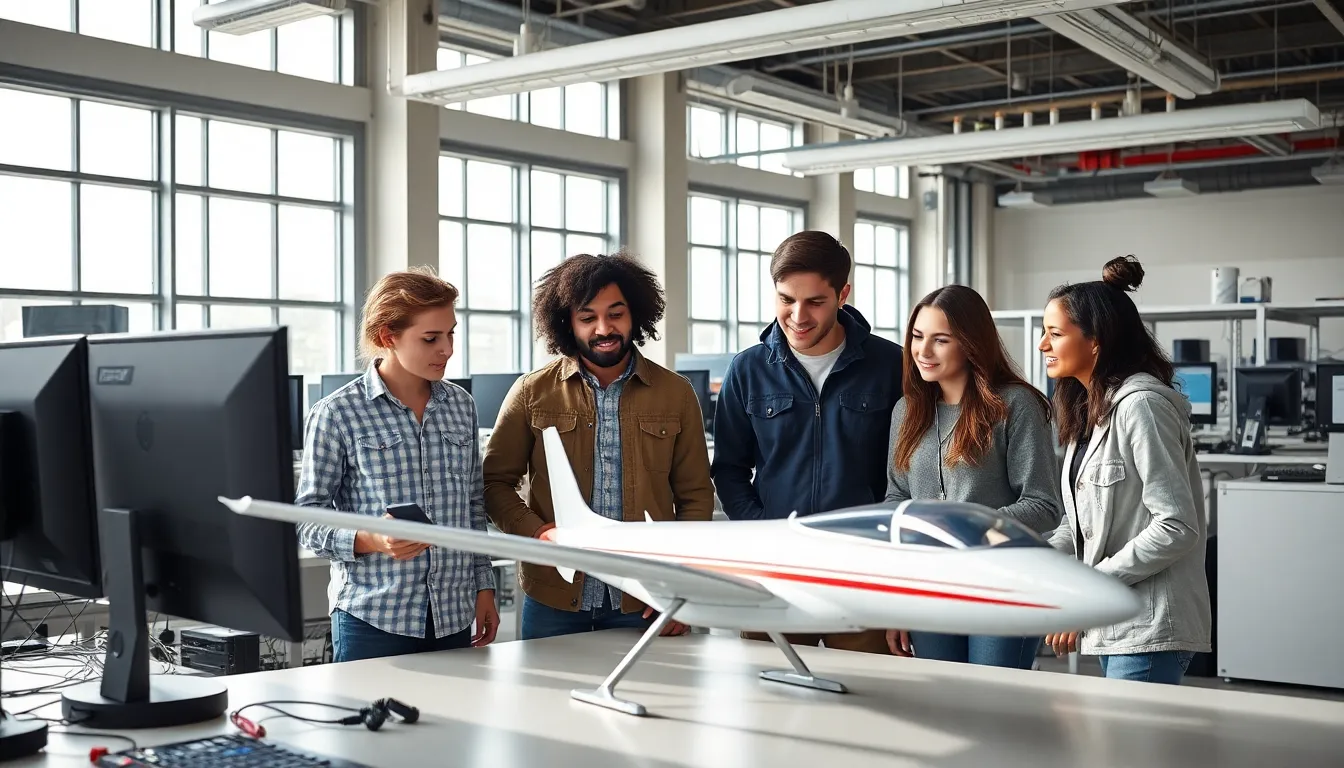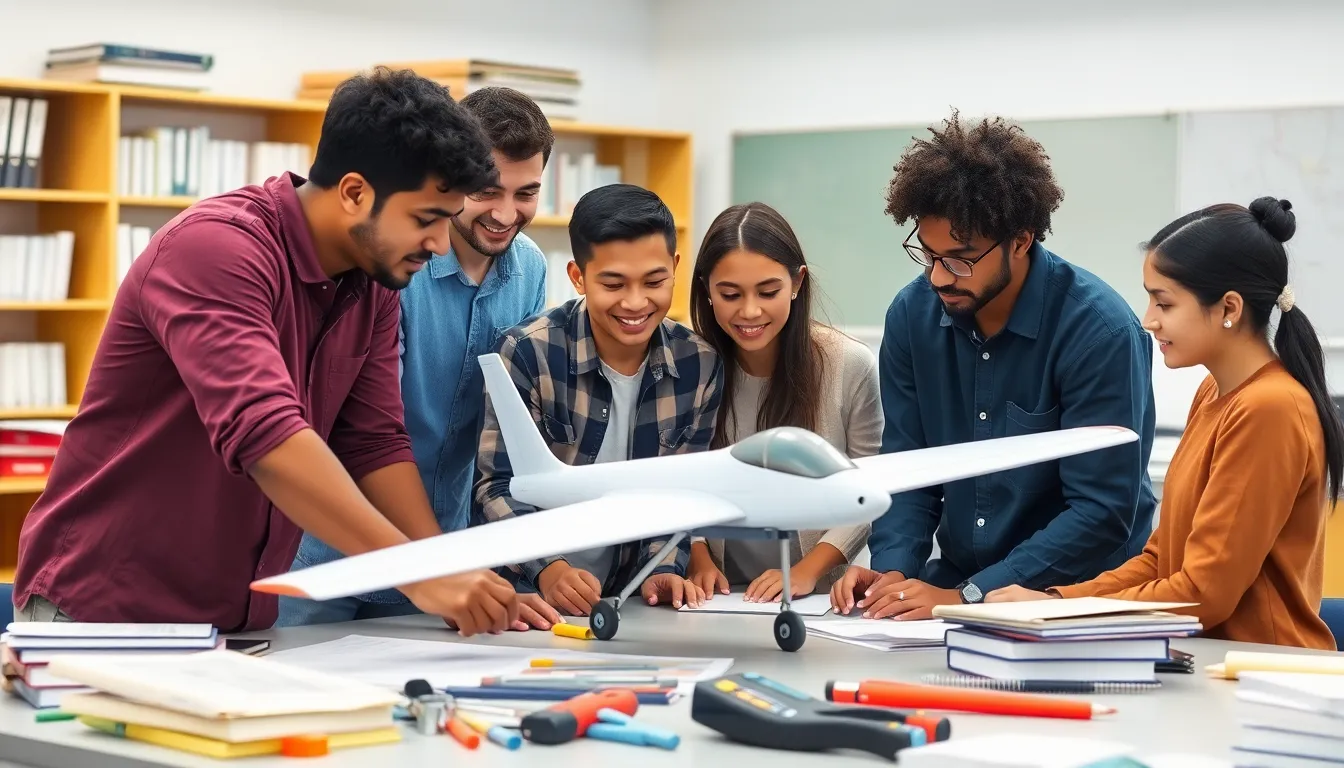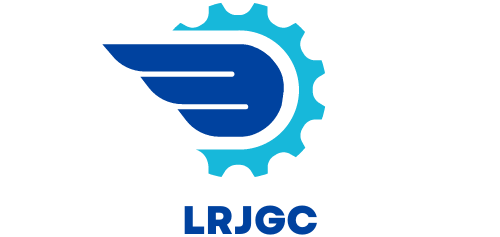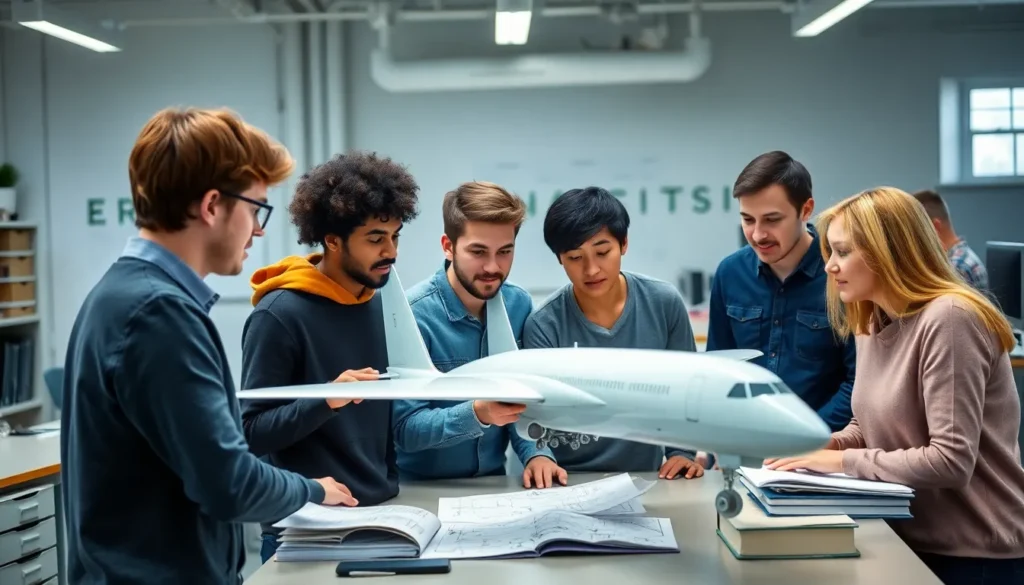Aerospace engineering isn’t just about launching rockets and designing sleek airplanes; it’s about turning dreams of flight into reality. If you’ve ever gazed up at the stars and wondered what it takes to reach them, you’re in for a treat. This field combines cutting-edge technology with the thrill of exploration, and it all starts with understanding the requirements that pave the way for aspiring engineers.
Aerospace Engineering Requirements
Aerospace engineering requires a solid foundation in mathematics and science. Complex concepts in aerodynamics, propulsion, and structural analysis form the core of the discipline. A bachelor’s degree in aerospace engineering or a related field serves as the primary educational requirement. Many universities offer accredited programs that cover essential topics like fluid dynamics and materials science.
Hands-on experience plays a crucial role in this field. Internships provide valuable opportunities for aspiring aerospace engineers to gain practical skills and insights. Students often engage in projects that simulate real-world challenges, fostering teamwork and problem-solving abilities.
Licensure is another critical aspect. Candidates pursuing identification as a Professional Engineer (PE) must pass the Fundamentals of Engineering (FE) exam and accumulate relevant work experience. Subsequently, they may take the Principles and Practice of Engineering (PE) exam to earn their license.
Additionally, advanced degrees can enhance career prospects. A master’s or doctorate may focus on specialized areas such as spacecraft design or advanced propulsion systems. Continuous learning remains essential due to rapid technological advancements in aerospace.
Certification from professional organizations adds value. Organizations like the American Institute of Aeronautics and Astronautics (AIAA) offer certifications that demonstrate expertise. Participation in professional associations encourages networking and keeps engineers updated on industry trends.
A combination of educational qualifications, practical experience, licensure, advanced studies, and professional certifications defines the requirements for aerospace engineering. Aspiring engineers must embrace these elements for success in a dynamic and evolving field.
Educational Background

Aerospace engineering demands a solid educational foundation, particularly in mathematics and science.
Relevant Degrees
Bachelor’s degrees in aerospace engineering or closely related fields are essential. Universities often offer programs that encompass fluid dynamics, materials science, and structural analysis. Many accredited programs ensure graduates possess the theoretical and practical knowledge required. Master’s degrees provide opportunities to specialize in fields like avionics or propulsion systems. Some graduates pursue Doctorate degrees for research roles or academic positions. These advanced degrees enhance career prospects and open paths in niche areas of the industry.
Additional Certifications
Certification from recognized professional organizations adds value to an aerospace engineer’s credentials. Pursuing certifications through the American Institute of Aeronautics and Astronautics (AIAA) demonstrates commitment to the profession. Specialized certifications in project management or software tools enhance employability in specific roles. Continuous education units, often required for recertification, encourage lifelong learning and skill development. These certifications also facilitate networking opportunities with other professionals in the aerospace sector.
Technical Skills
Technical skills form the backbone of aerospace engineering. Strong competencies in mathematics and physics are essential. Engineers apply these subjects to complex systems and processes, ensuring safety and efficiency in design. Programming languages, such as C++ or MATLAB, enable simulations and analyses, helping to solve intricate airborne challenges.
Core Competencies
Core competencies include proficiency in aerodynamics, propulsion, and structural integrity. Engineers must understand how these elements interact within aerospace systems. Problem-solving skills are vital, allowing engineers to tackle unexpected issues during design and testing. Collaboration skills enhance teamwork across various engineering disciplines. Attention to detail ensures accuracy in calculations and designs, reducing costly errors.
Specialized Knowledge
Specialized knowledge encompasses areas like avionics, materials science, and propulsion technology. Expertise in fluid dynamics influences aircraft performance and stability. Understanding advanced materials, including composites and alloys, improves durability while reducing weight. Knowledge of regulations and standards shapes compliance in design and manufacturing, ensuring public safety. Familiarity with current software tools, like Computer-Aided Design (CAD) applications, streamlines the design process, increasing efficiency and precision.
Work Experience
Practical work experience enhances an aerospace engineer’s skill set, preparing them for real-world challenges. Gaining experience through internships and co-ops provides invaluable insights.
Internships and Co-ops
Internships and co-ops serve as critical stepping stones for aspiring aerospace engineers. These programs typically last from a few months to a year and allow students to apply theoretical knowledge in a professional environment. Many organizations look for candidates who demonstrate initiative and adaptability. Engaging with industry professionals helps individuals develop technical competencies while networking. Such experiences often lead to job offers and better employment prospects. Companies may focus on specific areas like propulsion systems or structural analysis during these opportunities.
Entry-Level Positions
Entry-level positions typically require a bachelor’s degree in aerospace engineering or a related field. Graduates often find roles in design, analysis, or testing of aerospace systems. Employers seek candidates who possess a solid understanding of engineering principles and the ability to work collaboratively. New engineers may focus on specific tasks while learning from experienced professionals. Positions might include aerospace design engineer or systems engineer, where responsibilities include developing prototypes or analyzing performance metrics. These roles allow for skill development and create pathways toward advanced career opportunities in aerospace engineering.
Professional Development
Professional development plays a critical role in the aerospace engineering field. Engineers must continuously adapt to new technologies and methodologies.
Continuing Education
Participating in continuing education opportunities keeps aerospace engineers up to date with advancements. Courses on emerging technologies like unmanned systems and sustainable aviation enhance skill sets. Online platforms and professional workshops provide flexible learning options. Local universities often offer specialized programs focusing on niche topics. Membership in professional organizations supports access to resources and networking events, fostering collaboration among peers. Continuing education ensures engineers maintain a competitive edge in a rapidly evolving industry.
Industry Certifications
Attaining industry certifications demonstrates expertise and dedication in aerospace engineering. Organizations like the American Institute of Aeronautics and Astronautics (AIAA) offer respected certifications that indicate proficiency in specialized areas. Project management certifications enhance an engineer’s capabilities, especially for those who lead multidisciplinary teams. Familiarity with software tools often boosts job market prospects, as many employers prefer candidates with additional qualifications. Certification not only validates skills but also contributes to professional growth and networking opportunities within the aerospace community.

